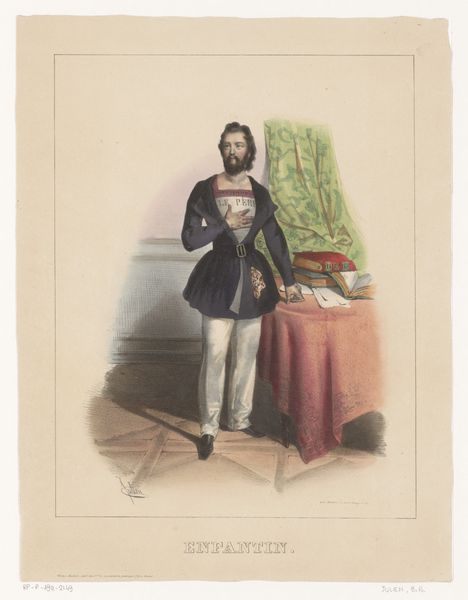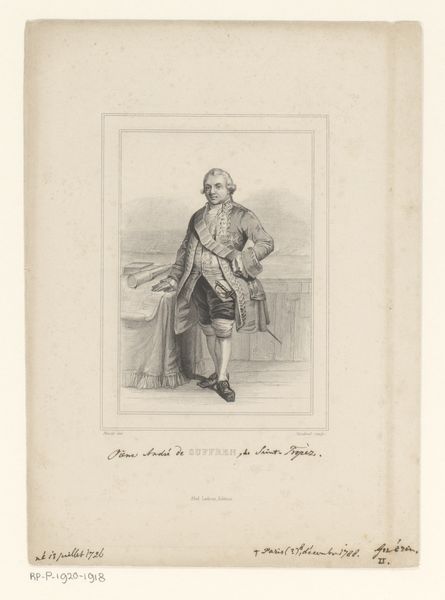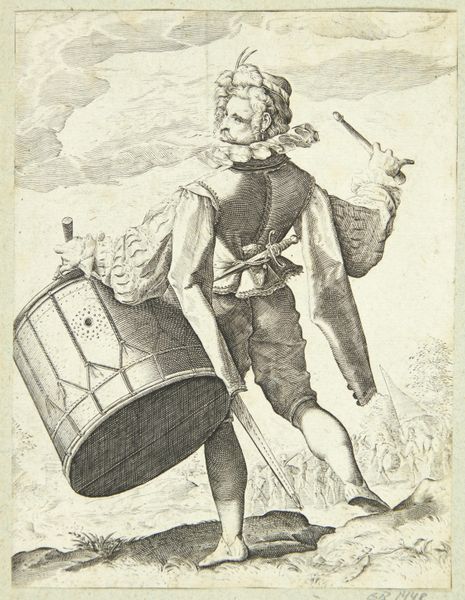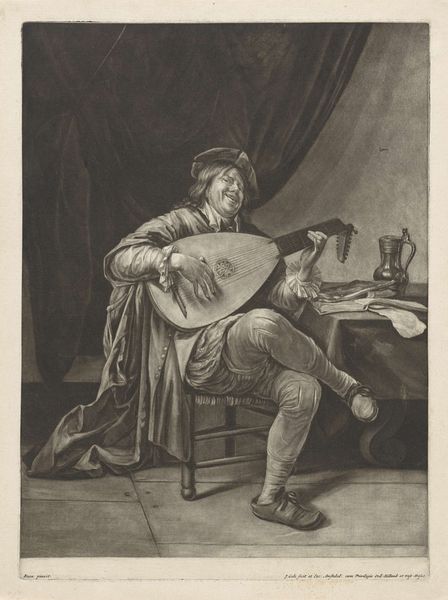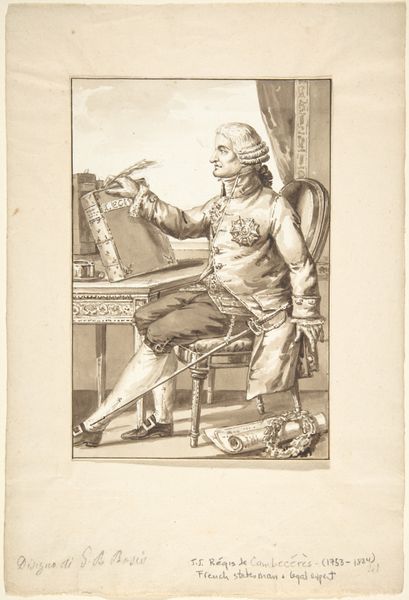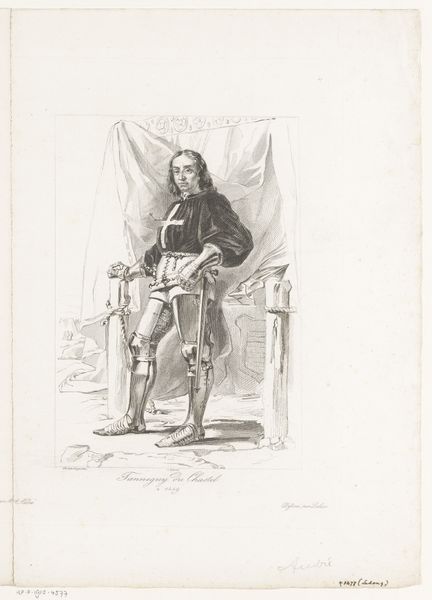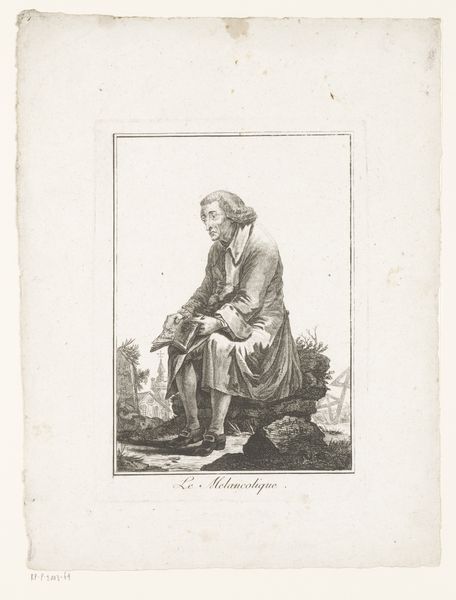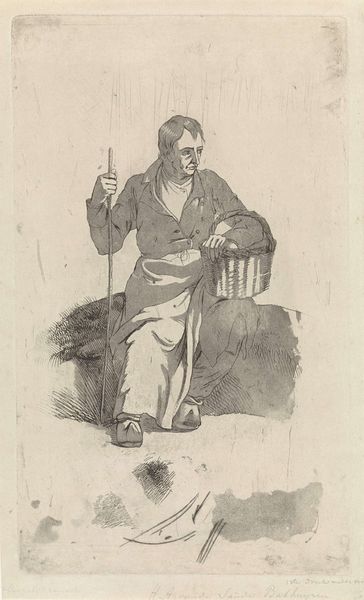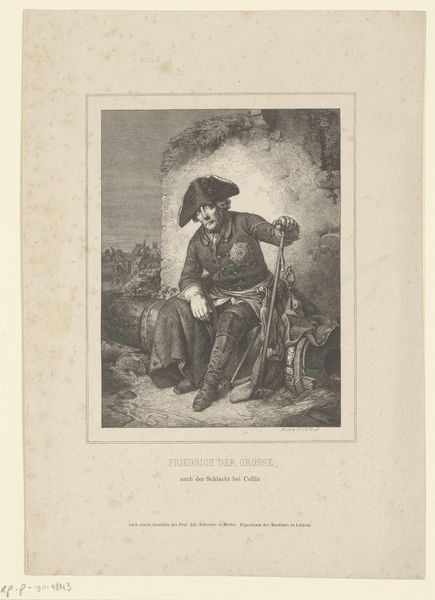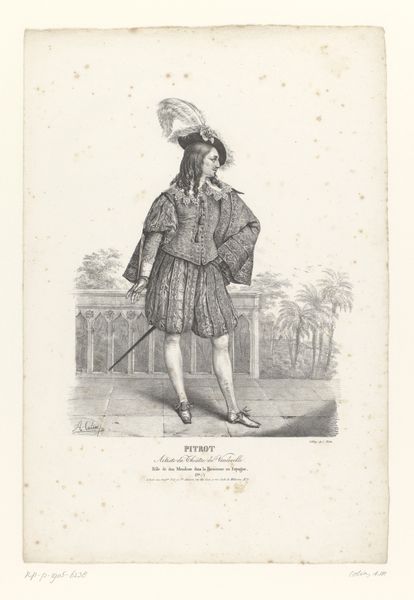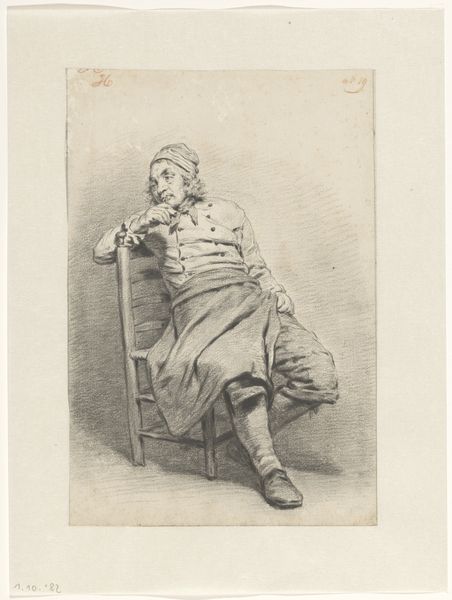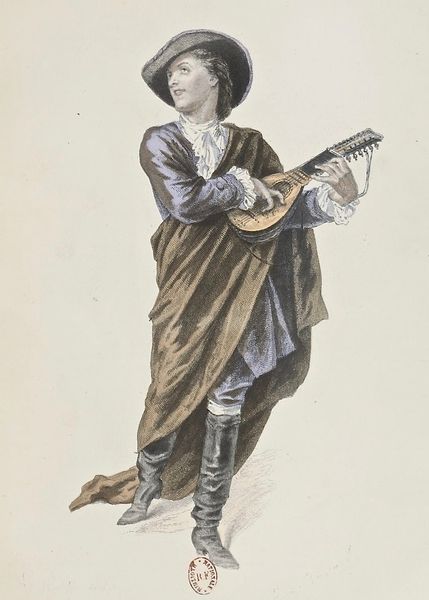
Malurus Pulcherrimus- Gould. Plate 23. Vol. III 1837 - 1838
0:00
0:00
coloured-pencil, print
#
portrait
#
coloured-pencil
# print
#
caricature
#
figuration
#
coloured pencil
#
portrait drawing
#
watercolour illustration
#
genre-painting
#
watercolor
Dimensions: 19 1/4 x 11 in. (48.9 x 27.94 cm) (image)
Copyright: Public Domain
Editor: We are looking at "Malurus Pulcherrimus - Gould. Plate 23. Vol. III," an illustration by John Gould from around 1837. It looks like a portrait made with watercolor or colored pencils, though presented as a print. There's an intriguing character, but there's a caricature-like quality. What strikes you first when you see this piece? Curator: The immediate impact stems from the manipulation of line and color. The artist has orchestrated the composition, dividing it almost equally between figure and supporting elements, thus giving them the same formal weight. What semiotic function might be inferred? Editor: I see that the detail in the figure's costume is amazing, the stripes, the trim on the cloak. It almost distracts you from his face, do you think that it might distract you from interpreting what he is trying to convey? Curator: Precisely. The textural variations are indeed captivating, strategically employed to engage the eye and draw one into a complex network of formal relationships. His is deliberately manipulating form to invite a response. It is hard to draw one singular interpretation, I will give you that. Editor: The attention to detail in the garments compared to the expression creates some tension that I think defines its caricature feeling. Overall the composition makes the character feel less of a figure study, but makes them become more of an object study. Is it unusual for watercolor pieces of this time to show this kind of exaggeration of shape and figure? Curator: Such stylistic deviations often reveal underlying philosophies or social commentaries. Could the artist's intent be to challenge conventional portraiture through an exaggerated form, disrupting traditional ideals of beauty and representation? The use of space is fascinating, isn't it? Editor: Definitely, so next time, I should think more about how shape impacts the meaning of these prints, and not just the details within the shapes. Curator: Absolutely, it’s through that interplay that deeper readings emerge. The arrangement is designed for scrutiny; the formal relationships become as vital as any narrative intent.
Comments
No comments
Be the first to comment and join the conversation on the ultimate creative platform.
